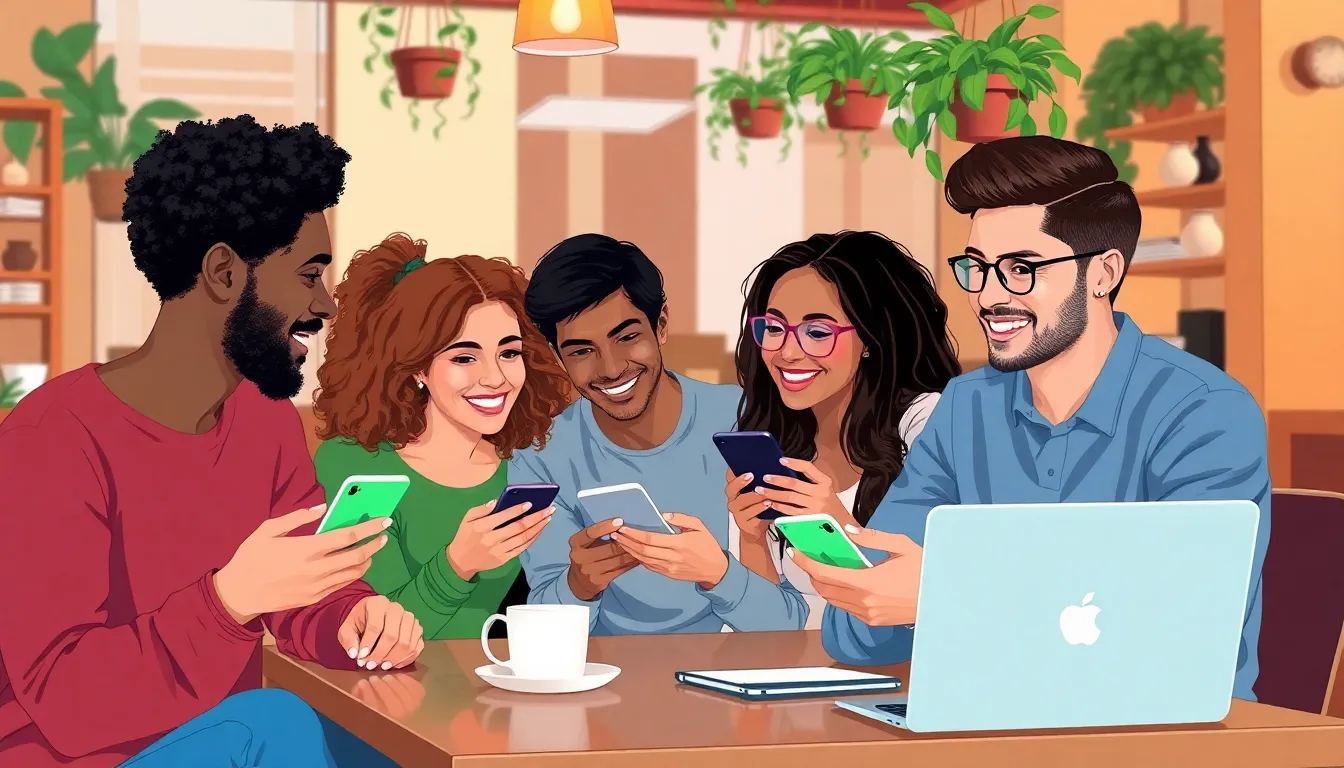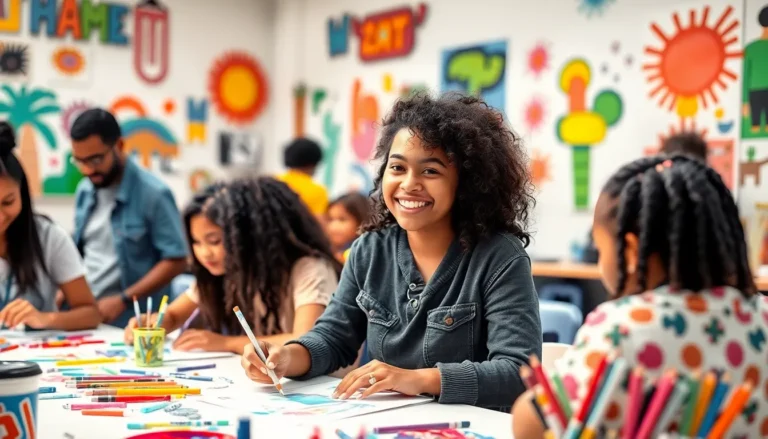In today’s fast-paced world, technology isn’t just a tool; it’s the glue holding together the chaos of daily life. From the moment the alarm clock buzzes (or chirps, or plays your favorite song), gadgets and gizmos invade every aspect of our routine. Whether it’s ordering breakfast with a few taps or video chatting with a friend halfway across the globe, technology transforms mundane tasks into moments of convenience and connection.
But let’s be honest—sometimes it feels like our devices have a mind of their own. Who hasn’t experienced the frustration of a frozen screen or a rogue autocorrect? Yet, despite the occasional hiccup, technology remains an indispensable partner in navigating life’s ups and downs. Join the exploration of how these digital marvels shape our lives, making them easier, funnier, and just a tad more interesting.
Table of Contents
ToggleThe Role of Technology in Daily Life
Technology simplifies everyday tasks and enhances efficiency. Individuals leverage smartphones for communicating instantly and managing schedules. Gadgets allow users to order groceries with a few taps, reducing time spent on mundane chores. Smart home devices enhance convenience, providing control over lighting and temperature through voice commands or apps.
Social connections thrive in a digital landscape. Video calls bridge distances, enabling families to stay in touch regardless of their locations. Social media platforms foster relationships, allowing users to share experiences and stay updated on friends’ lives.
Education benefits significantly from technology. Online courses and resources broaden access to knowledge, accommodating various learning styles. Students engage with interactive content that enhances understanding and retention.
While technology offers immense advantages, it presents challenges. Connectivity issues may disrupt communication, leading to frustration. Overreliance on devices can result in decreased face-to-face interactions, affecting personal relationships.
Adopting technology requires balance. Recognizing when to unplug supports mental well-being amid constant connectivity. Users can enrich their daily lives by embracing technology while remaining mindful of its effects on interactions and routines.
Ultimately, technology plays a crucial role in shaping modern living. It streamlines tasks, fosters connections, and influences education. Users engage with these tools to navigate the complexities of daily life effectively.
Communication Advances

Technology significantly transforms communication methods in daily life. Social media and instant messaging reshape how individuals connect and interact.
Social Media Impact
Social media platforms play a vital role in maintaining friendships and building networks. Users leverage sites like Facebook, Twitter, and Instagram to share life updates and engage with a global audience. Awareness about current events increases as information spreads rapidly through these channels. Businesses benefit from targeted advertising strategies that reach specific demographics effectively. Metrics show that 70% of Americans use social media regularly, highlighting its pervasive influence on communication and relationships. The ease with which people can connect fosters relationships, yet it raises concerns about authenticity and mental health.
Instant Messaging Trends
Instant messaging apps streamline communication, offering quick and efficient exchanges. Platforms such as WhatsApp, Telegram, and Messenger enable users to send texts, images, and videos instantly. Around 2 billion users engage with these apps globally, showcasing their popularity. Features like group chats and voice messages enhance interaction among friends and families, allowing for real-time conversations regardless of distance. Businesses adopt these tools to improve customer service, responding to inquiries instantly. Trends indicate a shift toward using video calls within messaging services, blending elements of traditional conversation with modern technology.
Home Automation
Home automation revolutionizes daily life by offering convenience and efficiency. Smart devices play a crucial role in transforming traditional houses into intelligent homes.
Smart Devices in Homes
Smart speakers, security cameras, and smart thermostats create a connected environment. Devices like Amazon Echo and Google Nest enable voice control over music, lighting, and security systems. Homeowners access real-time data, ensuring safety and efficiency. Smart locks enhance security, allowing users to unlock doors remotely. Integration with smartphone apps provides ease in managing multiple devices. Studies show that over 50% of households incorporate smart home technology, illustrating its growing popularity. These advancements streamline daily activities and enhance user comfort.
Energy Efficiency through Technology
Energy-efficient technologies contribute significantly to lower utility bills. Smart thermostats automatically adjust heating and cooling based on usage patterns and preferences. LED lighting systems consume less energy than traditional bulbs while offering longer lifespans. Energy monitoring systems track consumption and provide insights for reducing waste. Reports indicate that homes using energy-efficient technologies can reduce energy consumption by up to 30%. With technology driving efficiency, homeowners enjoy cost savings and a smaller environmental footprint. Automation ensures families benefit from sustainable practices while maintaining comfort.
Health and Fitness
Technology significantly enhances health and fitness, making it easier for individuals to monitor and improve their well-being.
Wearable Technology
Wearable technology, such as fitness trackers and smartwatches, empowers users to track their physical activity and health metrics daily. These devices often measure steps taken, heart rate, and sleep patterns. It’s common for individuals to rely on this data to set fitness goals and stay motivated. Over 30% of adults in the U.S. utilize wearable fitness trackers for personal health management. Users can also share their progress with friends or trainers, fostering community support. High engagement rates encourage users to maintain a consistent exercise routine.
Remote Healthcare Solutions
Remote healthcare solutions broaden access to medical services, particularly for those with mobility challenges. Telehealth platforms facilitate virtual consultations, helping patients receive medical advice from their homes. Documented findings show that over 60% of patients prefer online appointments for their convenience. Remote monitoring devices allow healthcare professionals to track patient health in real time, leading to timely interventions. Healthcare workers often use these technologies to enhance patient outcomes, ensuring care remains proactive rather than reactive. Integrating technology into healthcare reveals a trend toward more efficient and accessible health management.
Education and Learning
Technology plays a crucial role in education, transforming how individuals access information and learn new skills.
E-Learning Platforms
E-learning platforms provide extensive resources for various subjects. For instance, platforms like Coursera and Udemy offer courses that cater to diverse learning preferences. Learners can access interactive content, engage in quizzes, and receive certifications upon completion. With over 170 million registered users on Coursera, the demand for online education is evident. Additionally, these platforms often include mobile apps, allowing convenient access to learning materials anytime, anywhere. The flexibility of e-learning accommodates busy schedules, enabling students and professionals to pursue knowledge at their own pace.
Technology in the Classroom
Technology enhances traditional classroom environments. Interactive whiteboards allow teachers to present dynamic lessons that engage students visually. Devices like tablets promote collaboration, enabling learners to work on projects together in real time. Studies indicate that classrooms utilizing smart technology can improve student participation by 25%. Furthermore, digital tools facilitate instant feedback on assessments, helping educators adapt their teaching strategies quickly. Online resources enrich the curriculum, providing students with access to a wide array of materials that deepen their understanding. Teachers increasingly rely on these technologies to create a more inclusive and effective learning atmosphere.
Technology’s integration into daily life has transformed how individuals interact, learn, and manage their routines. With its ability to enhance convenience and connectivity, technology empowers users to navigate their lives more efficiently. From smart home devices to online education platforms, these advancements offer unprecedented opportunities for growth and engagement.
However, it’s crucial to maintain a balance between digital interactions and personal connections. By being mindful of technology’s influence, individuals can harness its benefits while ensuring their well-being. Embracing technology thoughtfully can lead to a more enriched and connected life, allowing everyone to thrive in an increasingly digital world.



